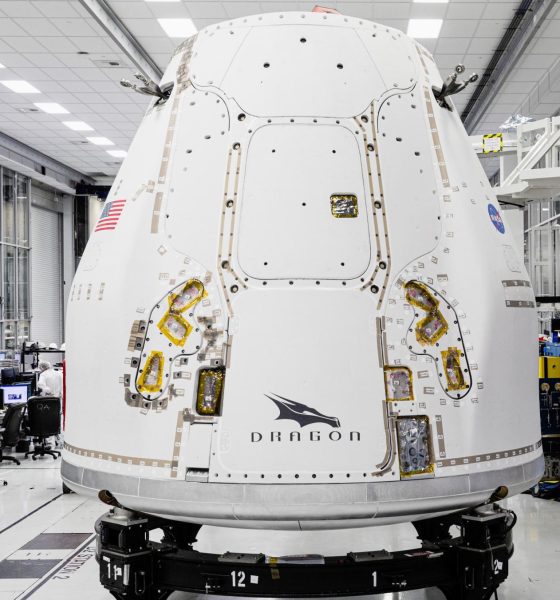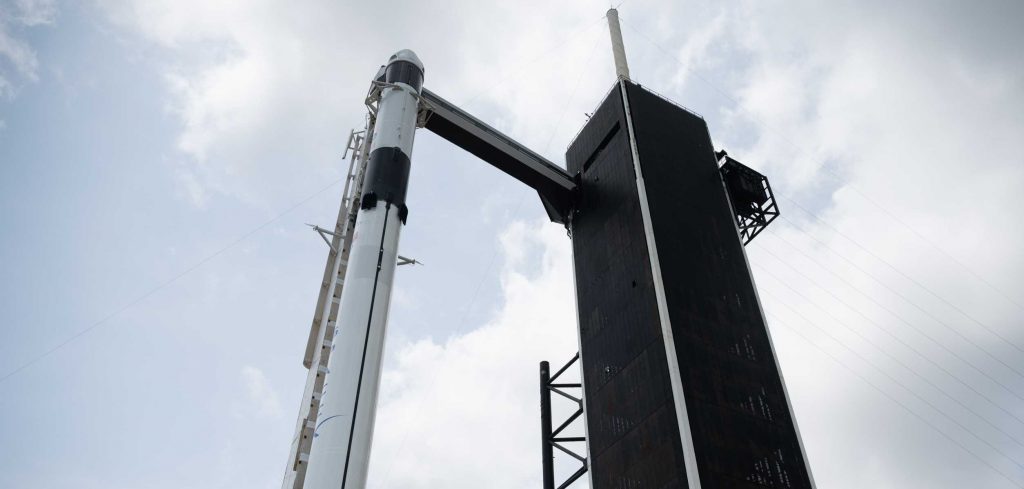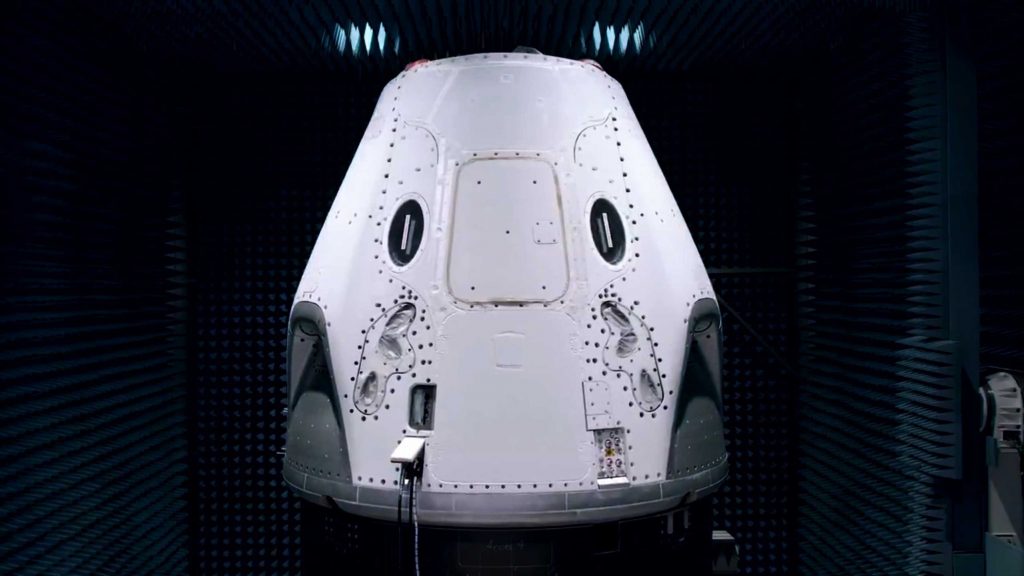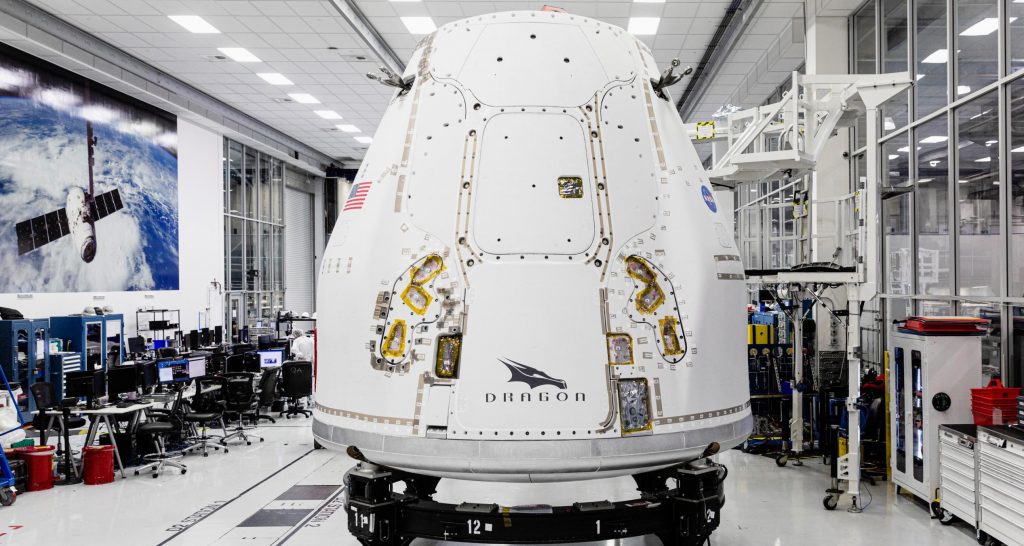

News
SpaceX ships upgraded cargo spacecraft to Florida for first orbital Dragon rendezvous
SpaceX says it’s shipped the first upgraded Dragon 2 cargo spacecraft to Florida, opening the door for the first simultaneous spaceflight of two Dragons.
More or less a modified version of SpaceX’s rapidly maturing Crew Dragon spacecraft, the company says that Cargo Dragon 2 will be “able to carry 50% more science payloads” than the original Cargo Dragon. Cargo Dragon checked off numerous earthshaking milestones over its career, ultimately becoming the first privately-developed spacecraft to reach orbit, reenter, and splashdown; the first commercial spacecraft to rendezvous and deliver cargo to the International Space Station (ISS), and the first routinely-reused orbital capsule.
SpaceX retired the historic vehicle after it completed its 21st successful orbital launch and landing in April 2020, less than two months before Crew Dragon lifted off on an even more historic astronaut launch debut. Prior to Demo-2, Crew Dragon completed what both NASA and SpaceX deemed an almost unbelievably flawless uncrewed launch debut in March 2019. Now, two months after the spacecraft successfully returned two NASA astronauts from orbit to earth for the first time, SpaceX is gearing up for Crew Dragon’s operational astronaut launch debut at almost the exact same time as Cargo Dragon 2 is preparing for its own debut.

As of an October 10th update from NASA, SpaceX and the space agency have decided to delay Crew Dragon’s Crew-1 launch by several weeks to double and triple-check that a booster engine issue that aborted a recent Falcon 9 satellite launch has no common root with its sister rocket. Likely built side by side at SpaceX’s Hawthorne, CA factory, it’s not unreasonable to want to verify that Falcon 9 booster B1061 (Crew-1) is unaffected by the same issue that forced B1062 to abort its US military GPS III satellite launch on October 2nd.


As a result, Crew-1 has slipped from placeholder launch dates on October 23rd and October 31st to sometime in “early-to-mid November,” while most external sources suggest that a mid-to-late November target is more likely. NASA and SpaceX never confirmed the arrival but Crew Dragon capsule C207 likely reached Florida in late August or early September, where teams have since been outfitting and processing the spacecraft for final inspection and closeout procedures.
Meanwhile, SpaceX says it shipped the first Crew Dragon-derived Cargo Dragon to Florida several days ago, meaning that the company will soon begin simultaneous preflight processing of two upgraded Dragons for the first time. Notably, SpaceX offered no launch target in its CRS-21 update, though NASA planning documents – prior to recent Crew-1 delays – stated that the mission is scheduled to launch NET November 22nd.



In other words, CRS-21 and Crew-1 are currently scheduled to launch within the same roughly two-week period – a situation that could pose some unique problems. As of now, Crew Dragon and Cargo Dragon 2 both have to launch from Kennedy Space Center Launch Complex 39A, as the pad is outfitted with a unique tower and Crew Access Arm (CAA) that both allows astronauts to board and cargo to be loaded. SpaceX’s Pad 39A turnaround record – the time between two launches from the same pad – is roughly 10 days and that figure is likely much higher for Crew Dragon missions.
If current dates hold, NASA will have to decide which SpaceX Dragon mission to launch first. Either way, though, it would take a major delay for CRS-21 and Crew-1 not to mark the first time that two SpaceX Dragon spacecraft will meet in orbit at the ISS. If successful, it’s safe to say that SpaceX will firmly solidify its position as the only spaceflight company on Earth truly capable of doing it all – from affordable and reusable rocket launches, crewed spaceflight, and space station resupply missions to orbital tourism and more.
Check out Teslarati’s Marketplace! We offer Tesla accessories, including for the Tesla Cybertruck and Tesla Model 3.

News
Tesla starts showing how FSD will change lives in Europe
Local officials tested the system on narrow country roads and were impressed by FSD’s smooth, human-like driving, with some calling the service a game-changer for everyday life in areas that are far from urban centers.

Tesla has launched Europe’s first public shuttle service using Full Self-Driving (Supervised) in the rural Eifelkreis Bitburg-Prüm region of Germany, demonstrating how the technology can restore independence and mobility for people who struggle with limited transport options.
Local officials tested the system on narrow country roads and were impressed by FSD’s smooth, human-like driving, with some calling the service a game-changer for everyday life in areas that are far from urban centers.
Officials see real impact on rural residents
Arzfeld Mayor Johannes Kuhl and District Administrator Andreas Kruppert personally tested the Tesla shuttle service. This allowed them to see just how well FSD navigated winding lanes and rural roads confidently. Kruppert said, “Autonomous driving sounds like science fiction to many, but we simply see here that it works totally well in rural regions too.” Kuhl, for his part, also noted that FSD “feels like a very experienced driver.”
The pilot complements the area’s “Citizen Bus” program, which provides on-demand rides for elderly residents who can no longer drive themselves. Tesla Europe shared a video of a demonstration of the service, highlighting how FSD gives people their freedom back, even in places where public transport is not as prevalent.
What the Ministry for Economic Affairs and Transport says
Rhineland-Palatinate’s Minister Daniela Schmitt supported the project, praising the collaboration that made this “first of its kind in Europe” possible. As per the ministry, the rural rollout for the service shows FSD’s potential beyond major cities, and it delivers tangible benefits like grocery runs, doctor visits, and social connections for isolated residents.
“Reliable and flexible mobility is especially vital in rural areas. With the launch of a shuttle service using self-driving vehicles (FSD supervised) by Tesla in the Eifelkreis Bitburg-Prüm, an innovative pilot project is now getting underway that complements local community bus services. It is the first project of its kind in Europe.
“The result is a real gain for rural mobility: greater accessibility, more flexibility and tangible benefits for everyday life. A strong signal for innovation, cooperation and future-oriented mobility beyond urban centers,” the ministry wrote in a LinkedIn post.
News
Tesla China quietly posts Robotaxi-related job listing
Tesla China is currently seeking a Low Voltage Electrical Engineer to work on circuit board design for the company’s autonomous vehicles.

Tesla has posted a new job listing in Shanghai explicitly tied to its Robotaxi program, fueling speculation that the company is preparing to launch its dedicated autonomous ride-hailing service in China.
As noted in the listing, Tesla China is currently seeking a Low Voltage Electrical Engineer to work on circuit board design for the company’s autonomous vehicles.
Robotaxi-specific role
The listing, which was shared on social media platform X by industry watcher @tslaming, suggested that Tesla China is looking to fill the role urgently. The job listing itself specifically mentions that the person hired for the role will be working on the Low Voltage Hardware team, which would design the circuit boards that would serve as the nervous system of the Robotaxi.
Key tasks for the role, as indicated in the job listing, include collaboration with PCB layout, firmware, mechanical, program management, and validation teams, among other responsibilities. The role is based in Shanghai.
China Robotaxi launch
China represents a massive potential market for robotaxis, with its dense urban centers and supportive policies in select cities. Tesla has limited permission to roll out FSD in the country, though despite this, its vehicles have been hailed as among the best in the market when it comes to autonomous features. So far, at least, it appears that China supports Tesla’s FSD and Robotaxi rollout.
This was hinted at in November, when Tesla brought the Cybercab to the 8th China International Import Expo (CIIE) in Shanghai, marking the first time that the autonomous two-seater was brought to the Asia-Pacific region. The vehicle, despite not having a release date in China, received a significant amount of interest among the event’s attendees.
Elon Musk
Elon Musk and Tesla AI Director share insights after empty driver seat Robotaxi rides
The executives’ unoccupied tests hint at the rapid progress of Tesla’s unsupervised Robotaxi efforts.

Tesla CEO Elon Musk and AI Director Ashok Elluswamy celebrated Christmas Eve by sharing personal experiences with Robotaxi vehicles that had no safety monitor or occupant in the driver’s seat. Musk described the system’s “perfect driving” around Austin, while Elluswamy posted video from the back seat, calling it “an amazing experience.”
The executives’ unoccupied tests hint at the rapid progress of Tesla’s unsupervised Robotaxi efforts.
Elon and Ashok’s firsthand Robotaxi insights
Prior to Musk and the Tesla AI Director’s posts, sightings of unmanned Teslas navigating public roads were widely shared on social media. One such vehicle was spotted in Austin, Texas, which Elon Musk acknowleged by stating that “Testing is underway with no occupants in the car.”
Based on his Christmas Eve post, Musk seemed to have tested an unmanned Tesla himself. “A Tesla with no safety monitor in the car and me sitting in the passenger seat took me all around Austin on Sunday with perfect driving,” Musk wrote in his post.
Elluswamy responded with a 2-minute video showing himself in the rear of an unmanned Tesla. The video featured the vehicle’s empty front seats, as well as its smooth handling through real-world traffic. He captioned his video with the words, “It’s an amazing experience!”
Towards Unsupervised operations
During an xAI Hackathon earlier this month, Elon Musk mentioned that Tesla owed be removing Safety Monitors from its Robotaxis in Austin in just three weeks. “Unsupervised is pretty much solved at this point. So there will be Tesla Robotaxis operating in Austin with no one in them. Not even anyone in the passenger seat in about three weeks,” he said. Musk echoed similar estimates at the 2025 Annual Shareholder Meeting and the Q3 2025 earnings call.
Considering the insights that were posted Musk and Elluswamy, it does appear that Tesla is working hard towards operating its Robotaxis with no safety monitors. This is quite impressive considering that the service was launched just earlier this year.








